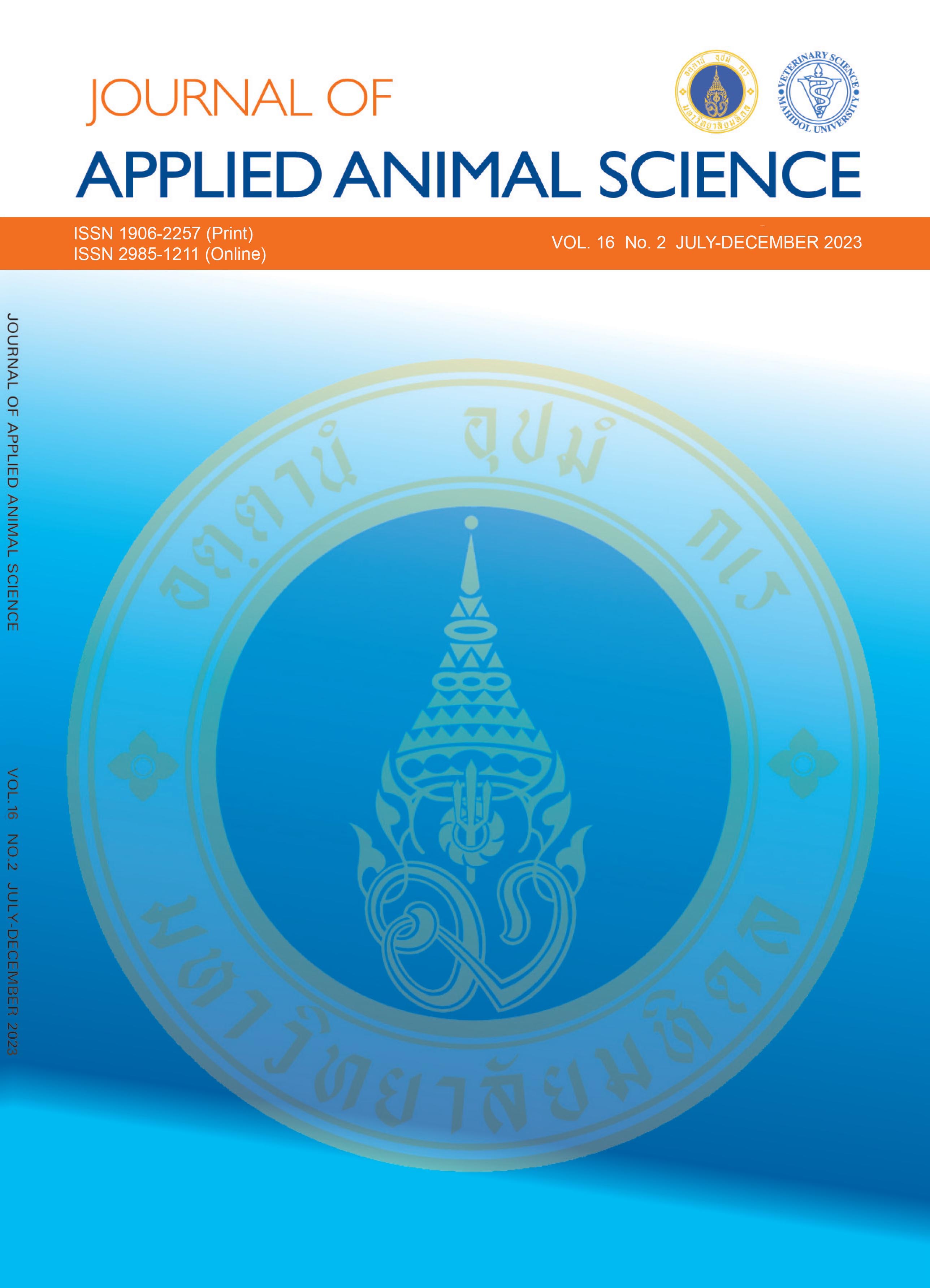Metastasis of Thyroid Gland Carcinoma to Mandibular Lymph Node
Keywords:
Thyroid gland carcinoma, Metastasis, Mandibular lymph nodeAbstract
Thyroid neoplasms encompass a range of abnormal growths of the neoplastic cells ranging from benign adenomas to malignant carcinomas and are one of the lists for the differential diagnoses from the thyroid gland or parathyroid neoplasm. These tumors cause various clinical signs in dogs, including breathing difficulties, swallowing issues, and compressing the surrounding tissues. Diagnosis involves a combination of physical examinations, radiography, ultrasound, hematology, clinical pathology investigation, and histopathological analyses. Treatment options depend on tumor types and stages, with surgical resection being common for benign tumors and more aggressive approaches such as surgery, radiation, and chemotherapy for malignancies. Even if the metastasis occurs to the regional lymph nodes, the mandibular lymph node metastasis is uncommon. The prognosis varies, with carcinomas posing greater challenges, particularly if they metastasize. Continuous monitoring and follow-up are crucial to assess treatment outcomes and tumor recurrences. Early detection and comprehensive veterinary management are essential in addressing thyroid neoplasms in dogs effectively.
References
Biller B, Berg J, Garrett L, Ruslander D, Wearing R, Abbott B, et al. 2016 AAHA oncology guidelines for dogs and cats. J Am Anim Hosp Assoc. 2016;52(4):181-204.
Dobson JM, Lascelles BDX. BSAVA manual of canine and feline oncology. Quedgeley: British Small Animal Veterinary Association; 2011.
Doss JC, Grone A, Capen CC, Rosol TJ. Immuno-histochemical localization of chromogranin A in endocrine tissues and endocrine tumors of dogs. Vet Pathol. 1998;35(4):312-5.
Erickson AK, Regier PJ, Watt MM, Ham KM, Marvel SJ, Wallace ML, et al. Incidence, survival time, and surgical treatment of parathyroid carcinomas in dogs:100 cases (2010-2019). J Am Vet Med Assoc. 2021;259(11):1309-17.
Jubb KVF, Kennedy PC, Palmer N. Pathology of domestic animals. San Diego: Academic press; 2012.
Meuten DJ. Tumors in domestic animals. Iowa: John Wiley & Sons; 2020.
Morris J, Dobson J. Small animal oncology. Iowa: John Wiley & Sons; 2008.
Pessina P, Castillo V, Sartore I, Borrego J, Meikle A. Semiquantitative immunohistochemical marker staining and localization in canine thyroid carcinoma and normal thyroid gland. Vet Comp Oncol. 2016;14(3):e102-e12.
Stanley S, Martin A. Thyroid, parathyroid hormones and calcium homeostasis. Anaesth Intensive Care. 2023;24(10):639-43.
Worley DR. Canine Thyroid Neoplasia. In: Monnet E, editor. Small Animal Soft Tissue Surgery. 2nd ed. New Jersey: John Wiley & Sons; 2023. p. 779-84.
Downloads
Published
How to Cite
Issue
Section
License
Copyright (c) 2023 Mahidol University Faculty of Veterinary Science

This work is licensed under a Creative Commons Attribution-NonCommercial-NoDerivatives 4.0 International License.
Published articles are under the copyright of the Journal of Applied Animal Science (JAAS) effective when the article is accepted for publication. The editorial boards claim no responsibility for the content or opinions expressed by the authors of individual articles in this journal. Partially or totally publication of an article elsewhere is possible only after the consent from the editors.



